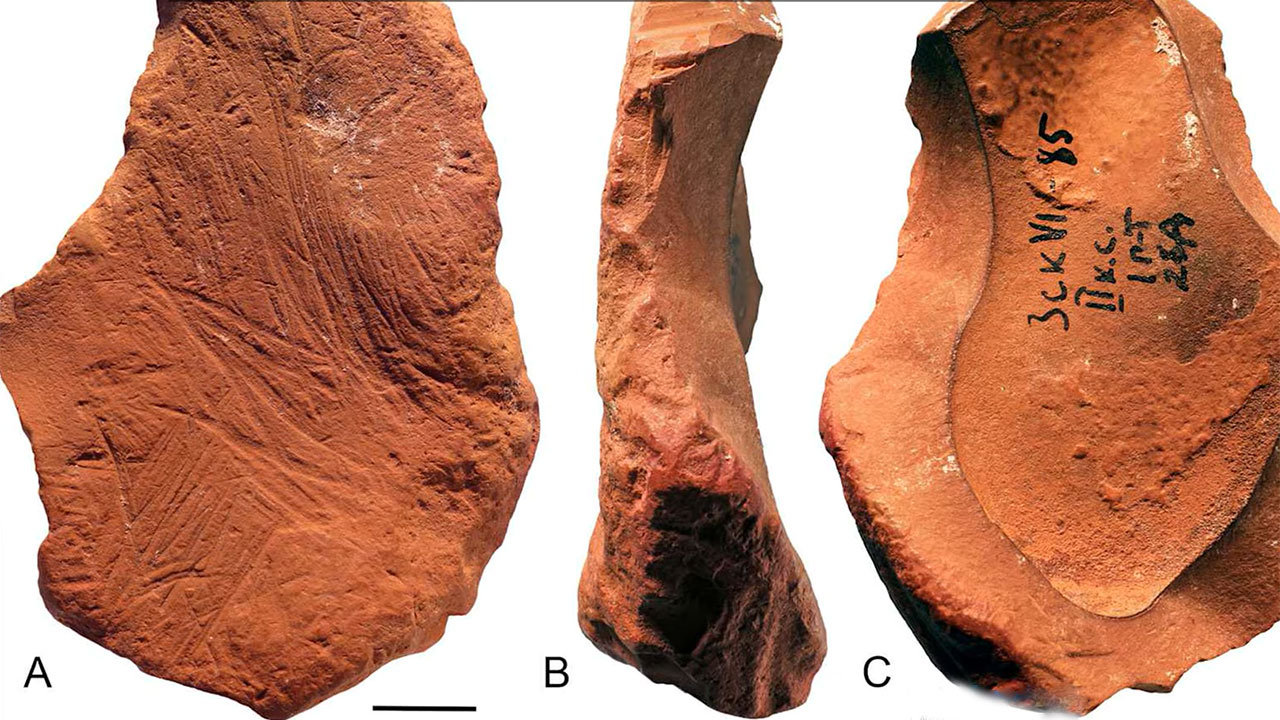
Recent archaeological excavations in Crimea have unearthed a fascinating aspect of Neanderthal culture: the crafting and use of ochre crayons dating back approximately 130,000 years. This discovery not only provides the earliest evidence of such tools but also suggests a vibrant, symbolic aspect to Neanderthal culture, challenging the long-held view of these early humans as solely utilitarian. The presence of these crayon-like implements, made from red ochre, indicates a level of artistic expression and creativity previously unattributed to Neanderthals.
Discovery of the Ochre Crayons
Archaeologists conducting excavations in Crimea have stumbled upon an intriguing find: fragments of ancient ochre crayons, estimated to be around 130,000 years old. These artifacts, as reported in recent studies on Neanderthal tools, provide compelling evidence of the deliberate shaping and use of pigment for artistic purposes by Neanderthals. The crayons were made from locally sourced red ochre, a material commonly used in Neanderthal tool-making traditions, further solidifying the link between these artifacts and their creators. Discover Magazine provides an in-depth look at these findings.
Neanderthals’ Crafting Techniques
The crafting of these ochre crayons demonstrates the advanced material manipulation skills of Neanderthals. The raw ochre was processed into crayon forms through grinding and binding, a technique that required a certain level of sophistication and understanding of the material. Tool marks on the crayons indicate they were held and used similarly to modern drawing implements. The preservation of the red ochre composition in the artifacts points to intentional color selection for non-functional purposes, suggesting an appreciation for aesthetics and color. Phys.org provides further insights into these crafting techniques.
Evidence of Symbolic Behaviors
The ochre crayons unearthed in Crimea reveal that Neanderthals engaged in symbolic behaviors. The use of these tools suggests ritual or decorative applications beyond practical needs, indicating a level of abstract thinking. Traces of ochre residue on nearby surfaces imply the crayons were used to create colored markings, further evidencing early symbolic behavior. This finding aligns with broader patterns of Neanderthal symbolism, including body adornment and site decoration, painting a vivid picture of their cultural practices 130,000 years ago.
Implications for a Colorful Culture
The discovery of ochre crayons provides evidence of a colorful culture among Neanderthals. The use of pigment in daily or ceremonial life suggests that Neanderthals valued aesthetics and potentially used colors for social signaling or artistic expression. This challenges stereotypes of Neanderthals, portraying them as capable of creative endeavors that enriched their cultural landscape. The use of color, as evidenced by these crayons, adds a vibrant dimension to our understanding of Neanderthal culture.
Archaeological Context in Crimea
The location of the discovery, Crimea, was a key Neanderthal habitat and provided the essential ochre resources for crayon production. The surrounding artifacts at the site, including stone tools, contextualize the crayons within a Neanderthal settlement focused on innovation. The preservation conditions in Crimea allowed for the rare survival of these fragile ochre implements, enabling modern analysis and providing a unique window into the past.
Broader Significance for Prehistory
The use of ochre crayons by Neanderthals 130,000 years ago predates similar behaviors in early modern humans, suggesting parallel cultural evolution. The findings from Crimea contribute to ongoing debates about Neanderthal cognition, emphasizing their symbolic capacities and challenging previous assumptions about their cognitive abilities. Future research may uncover more evidence of colorful practices, further illuminating the societal complexity of Neanderthals and enriching our understanding of prehistoric cultures.
More from MorningOverview